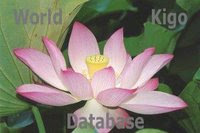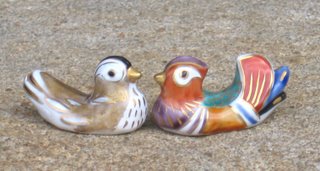[ . BACK to DARUMA Museum TOP . ]
:::::::::::::::::::::::::::::::::::::::::::::::::::::::::::::::::::::::::::::::::::::::::::::::::::::
- quote from the wikipedia
:::::::::::::::::::::::::::::::::::::::::

Japanese dragons are diverse legendary creatures in Japanese mythology and folklore. Japanese dragon myths amalgamate native legends with imported stories about dragons from China, Korea and India. The style of the dragon was heavily influenced by the Chinese dragon. Like these other Asian dragons, most Japanese ones are water deities associated with rainfall and bodies of water, and are typically depicted as large, wingless, serpentine creatures with clawed feet.
The modern Japanese language has numerous "dragon" words, including indigenous tatsu from Old Japanese ta-tu, Sino-Japanese ryū or ryō 竜 from Chinese lóng 龍, nāga ナーガ from Sanskrit nāga, and doragon ドラゴン from English dragon.
Indigenous Japanese dragons
The ca. 680 CE Kojiki and the ca. 720 CE Nihongi mytho-histories have the first Japanese textual references to dragons. "In the oldest annals the dragons are mentioned in various ways," explains de Visser (1913:135), "but mostly as water-gods, serpent- or dragon-shaped." The Kojiki and Nihongi mention several ancient dragons:
Yamata no Orochi 八岐大蛇 "8-branched giant snake" was an 8-headed and 8-tailed dragon slain by the god of wind and sea Susanoo, who discovered the Kusanagi-no-Tsurugi (legendary sword of the Imperial Regalia of Japan) in one of its tails.
Watatsumi 海神 "sea god" or Ryūjin 龍神 "dragon god" was the ruler of seas and oceans, and described as a dragon capable of changing into human form. He lived in the undersea Ryūgū-jō 龍宮城 "dragon palace castle", where he kept the magical tide jewels.
Toyotama-hime 豊玉姫
"Luminous Pearl Princess" was Ryūjin's daughter. She purportedly was an ancestress of Emperor Jimmu, Japan's legendary first emperor.
Wani 鰐 was a sea monster that is translated as both "shark" and "crocodile". Kuma-wani 熊鰐 "bear (i.e., giant or strong) shark/crocodile" are mentioned in two ancient legends. One says the sea god Kotoshiro-nushi-no-kami transformed into an "8-fathom kuma-wani" and fathered Toyotama-hime, the other says a kuma-wani piloted the ships of Emperor Chūai and his Empress Jingū.
Mizuchi 蛟 or 虯 was a river dragon and water deity. The Nihongi records legendary Emperor Nintoku offering human sacrifices to mizuchi angered by his river engineering projects.
These myths about Emperor Jimmu descending from Toyatama-hime evidence the folklore that Japanese Emperors are descendants of dragons. Compare the ancient Chinese tradition of dragons symbolizing the Emperor of China.
Dragons in later Japanese folklore were influenced by Chinese and Indian myths.
Kiyohime 清姫 "Purity Princess" was a teahouse waitress who fell in love with a young Buddhist priest. After he spurned her, she studied magic, transformed into a dragon, and killed him.

Kaikidan Ekotoba 怪奇談絵詞
Nure-onna 濡女
"Wet Woman" was a dragon with a snake's body and a woman's head. She was typically seen while washing her hair on a riverbank and would sometimes kill humans when angered.
Zennyo Ryūō 善如龍王 "goodness-like dragon king" was a rain-god depicted either as a dragon with a snake on its head or as a human with a snake's tail.
In My Lord Bag of Rice, the Ryūō "dragon king" of Lake Biwa asks the hero Tawara Tōda 田原藤太 to kill a giant centipede.
Urashima Tarō rescued a turtle which took him to Ryūgū-jō and turned into the attractive daughter of the ocean god Ryūjin.
Inari, the god of fertility and agriculture, was sometimes depicted as a dragon or snake instead of a fox.
. Zennyo Ryūō 善如龍王 / 善女龍王 .
Sino-Japanese dragons
Chinese dragon mythology is central to Japanese dragons. Japanese words for "dragon" are written with kanji "Chinese characters", either simplified shinjitai 竜 or traditional kyūjitai 龍 from Chinese long 龍. These kanji can be read tatsu in native Japanese kun'yomi and ryū or ryō in Sino-Japanese on'yomi.
Many Japanese dragon names are loanwords from Chinese. For instance, the Japanese counterparts of the astrological Four Symbols are:
Seiryū - Qinglong 青龍 "Azure Dragon"
Suzaku - Zhuque 朱雀 "Vermilion Bird"
Byakko - Baihu 白虎 "White Tiger"
Genbu -Xuanwu 玄武 "Black Tortoise"
Japanese Shiryū 四竜 "4 dragon [kings]" are the legendary Chinese Longwang 龍王 "Dragon Kings" who rule the four seas.
Gōkō -Aoguang 敖廣 "Dragon King of the East Sea"
Gōkin - Aoqin 敖欽 "Dragon King of the South Sea"
Gōjun - Aorun 敖閏 "Dragon King of the West Sea"
Gōjun - Aoshun 敖順 "Dragon King of the North Sea"
Some authors differentiate Japanese ryū and Chinese long dragons by the number of claws on their feet. "In Japan," writes Gould (1896:248), "it is invariably figured as possessing three claws, whereas in China it has four or five, according as it is an ordinary or an Imperial emblem." During World War II, the Japanese military named many armaments after Chinese dragons.
The Kōryū 蛟竜 < jiaolong 蛟龍 "flood dragon" was a midget submarine and the Shinryū 神竜 < shenlong 神龍 "spirit dragon" was a rocket kamikaze aircraft. An Imperial Japanese Army division, the 56th Division, was codenamed the Dragon Division. The Dragon Division was annihilated in the Chinese town of Longling, in Chinese meaning Dragon's Tomb.
Indo-Japanese dragons
When Buddhist monks from other parts of Asia brought their faith to Japan they transmitted dragon and snake legends from Buddhist and Hindu mythology. The most notable examples are the nāga ナーガ or 龍 "Nāga; rain deity; protector of Buddhism" and the nāgarāja ナーガラージャ or 龍王 ”Nāgaraja; snake king; dragon king". De Visser (1913:179) notes that many Japanese nāga legends have Chinese features. "This is quite clear, for it was via China that all the Indian tales came to Japan. Moreover, many originally Japanese dragons, to which Chinese legends were applied, were afterwards identified with nāga, so that a blending of ideas was the result." For instance, the undersea palace where nāga kings supposedly live is called Japanese ryūgū 龍宮 "dragon palace" from Chinese longgong 龍宮.
Compare ryūgū-jō 龍宮城 "dragon palace castle", which was the sea-god Ryūjin's undersea residence. Japanese legends about the sea-god's tide jewels, which controlled the ebb and flow of tides, have parallels in Indian legends about the nāga's nyoi-ju 如意珠 "cintamani; wish-fulfilling jewels".
Some additional examples of Buddhistic Japanese dragons are:
Hachidai ryūō 八大龍王 "8 great naga kings" assembled to hear the Buddha expound on the Lotus Sutra, and are a common artistic motif.
Mucharinda ムチャリンダ "Mucalinda" was the Nāga king who protected the Buddha when he achieved bodhi, and is frequently represented as a giant cobra.
Benzaiten 弁才天 is the Japanese name of the goddess Saraswati, who killed a 3-headed Vritra serpent or dragon in the Rigveda. According to the Enoshima Engi, Benzaiten created Enoshima Island in 552 CE in order to thwart a 5-headed dragon that had been harassing people.
Kuzuryū 九頭龍 "9-headed dragon", deriving from the multi-headed Naga king シェーシャ or 舍沙 "Shesha", is worshipped at Togakushi Shrine in Nagano Prefecture.
Dragons in modern culture
Dragons are a familiar motif in Japanese art and architecture, literature, and popular culture. Some alphabetically arranged examples include:
Chunichi Dragons are a professional baseball team.
Dragon Ball is a manga and anime metaseries.
Dragon Quest is a popular videogame series.
Kamen Rider Ryuki (English Kamen Rider Dragon Knight) is a show in the Kamen Rider Series.
Long is the main villain of the Gekiranger Super Sentai series, americanized in Power Rangers: Jungle Fury as Dai Shi and Scorch.
King Ghidorah is a three-headed golden dragon that has taken many forms in the kaiju films, specifically in the Godzilla series.
Manda is a dragon in kaiju films.
Nāsu ナース is a dragon robot in the Ultraman series.
"Ryū 龍" or "Dragon: the Old Potter's Tale" is a short story by Ryūnosuke Akutagawa
Haku/Kohaku from the film Spirited Away is a river spirit whose true form is that of a white dragon.
Natsu, the main character of the anime/mangá series Fairy Tail was raised by a Dragon, and can use fire for attacks.
Breath of Fire IV shows a tale of Ryu and Fou-Lu being able to transform into ancient dragons.
In Touhou, a dragon is said to be the highest-order god of Gensokyo. Based from Perfect Memento that he lived anywhere and he looks like a serpent with hands and horns.
In Monster Hunter Portable 3rd Amatsumagatsuchi the elder dragon of Sacred Mountain also loosely based on Japanese dragon with three claws and It possess the ability to manipulate storms and wind.
Dragon Slayers in Fairy Tail
- quote from the wikipedia
:::::::::::::::::::::::::::::::::::::::::::::::::::::::::::::::::::::::::::::::::::::::::::::::::::::
. Jinmu Tenno 神武天皇 .
. Toyotama Hime 豊玉姫 - Amenoakarutama 天明玉命 .
. 九頭龍社 Shrine of the Nine-Headed Dragon .
Togakushi Nagano
[ . BACK to WORLDKIGO . TOP . ]
[ . BACK to DARUMA MUSEUM TOP . ]
:::::::::::::::::::::::::::::::::::::::::::::::::::::::::::::::::::::::::::::::::::::::::::::::::::::


















































